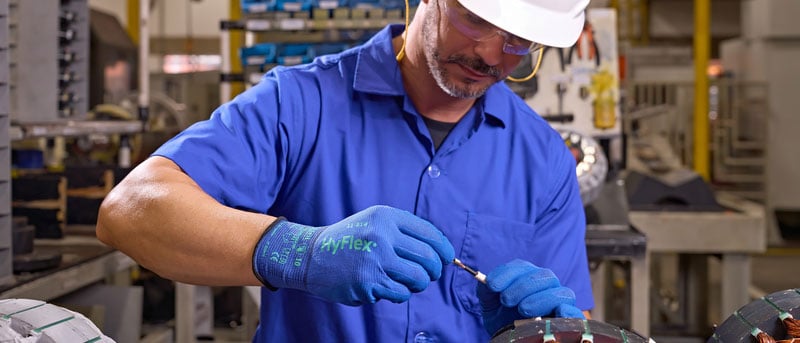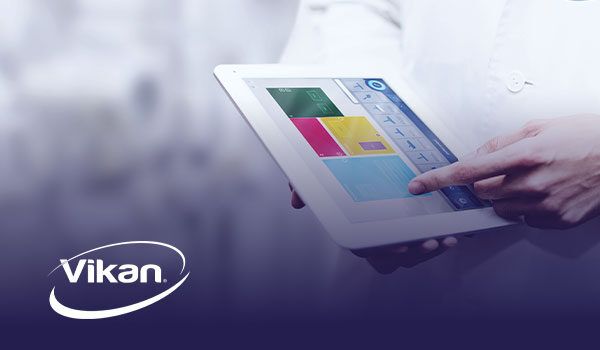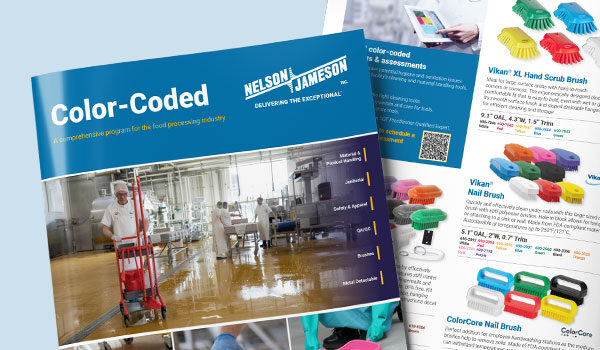
In occupational safety, the most advanced Personal Protective Equipment (PPE) is ineffective if workers cannot wear it comfortably. This foundational truth demands that safety managers look beyond basic protection and address the human behavioral side of safety: non-compliance. If safety eyewear is uncomfortable, ill-fitting, or pinching, resistance sets in, and it can lead workers to avoid wearing it entirely. To drive successful safety programs and reduce eye injury rates, the link between worker comfort, PPE acceptance, and compliance must be prioritized.
Enhance safety in your food manufacturing facility with PPE from MCR Safety.

The key to reducing eye injuries is understanding why non-compliance occurs. If eyewear is uncomfortable or ill-fitting, especially when worn over prescription glasses, workers simply will not wear it. This common resistance directly leads to reduced PPE acceptance and an increased rate of eye injuries.
Addressing this problem requires shifting focus to ergonomic design elements and acknowledging that comfort equals compliance.
An effective PPE assessment process must focus on securing higher long-term compliance by emphasizing fit and customization. The goal is to ensure every worker finds a pair of glasses they want to wear, thereby maximizing safety and productivity.
This thought leadership approach guides companies through the selection process, prioritizing designs that mitigate common fit complaints:
By showcasing a variety of comfortable, high-quality, and task-specific MCR Safety eyewear styles, companies are encouraged to purchase a range of options. This strategy treats premium, comfortable eyewear as a tool for safety control and assures customers that their employees are equipped with gear built for comfort, leading directly to high compliance.
Safety glass technology has revolutionized eye protection, offering advanced features that go beyond simple impact protection. These innovations directly address common workforce challenges by improving visibility, reducing distractions, and ultimately preventing accidents and injuries. Read a recent article from Nelson-Jameson exploring these advanced technologies crucial for modern food manufacturing environments.
At Nelson-Jameson, we deliver solutions, not just products. We understand the unique challenges of food manufacturing and are dedicated to helping you create a safer, more compliant workplace. We can assist you in selecting the right MCR Safety glasses and other PPE for your specific plant needs. Our expert-curated programs include comprehensive resources such as audits, assessments, training, and literature to support your quality and safety initiatives.


November 25, 2025
Efficiency and worker safety are equally important goals in food manufacturing facilities. And safety me...

November 25, 2025
For food processors, the risk of contamination from broken or lost equipment or Personal Protective Equi...

November 24, 2025
Food processing facilities face a critical dual mandate: maintaining the stringent safety standards nece...

Recognize and address possible hygiene and sanitation challenges based on the cleaning and material handling equipment available in your facility.
Through a discovery call, virtual, or on-site assessment, Vikan SQF Practitioner certified specialists will assist in confirming that your system and cleaning tool inventory aligns with your risk management objectives while pinpointing any missing tools and enhancing maintenance and usage practices. Evaluate whether your existing tools are utilized in the most effective manner, or determine if a more suitable tool exists for the task at hand. Ensure that your tools comply with all relevant standards and regulatory requirements. Site evaluations encompass a summary survey, an overview of the location, a color-coded factory layout plan, product suggestions, a recommended order form, and a proposal for a follow-up survey.
Food Safety, Sanitation, Cleaning Tools, Color Coding

This is a comprehensive program for the food processing industry. Nelson-Jameson brings together the most extensive collection of color-coded products for material handling, product handling, janitorial, safety, apparel, QA/QC, and metal-detectable applications. With the right pieces, a color-coding system is a powerful tool in preventing cross-contamination of allergens and food-borne illnesses that can lead to sickness or expensive product recalls.

Food Safety, Sanitation, Cleaning Tools, Color Coding

Food Safety

Get Petrifilm Certified through our complimentary immersive workshop for managers, personnel, and teams. The workshop offers practical knowledge through hands-on training and networking with industry professionals and experts. Attendees gain an in-depth understanding of Petrifilm technology and valuable insights into effective environmental monitoring practices. Participants leave with a certification and a wealth of resources that can significantly contribute to elevating their plant's quality control standards.
Food Safety, Sanitation, Laboratory